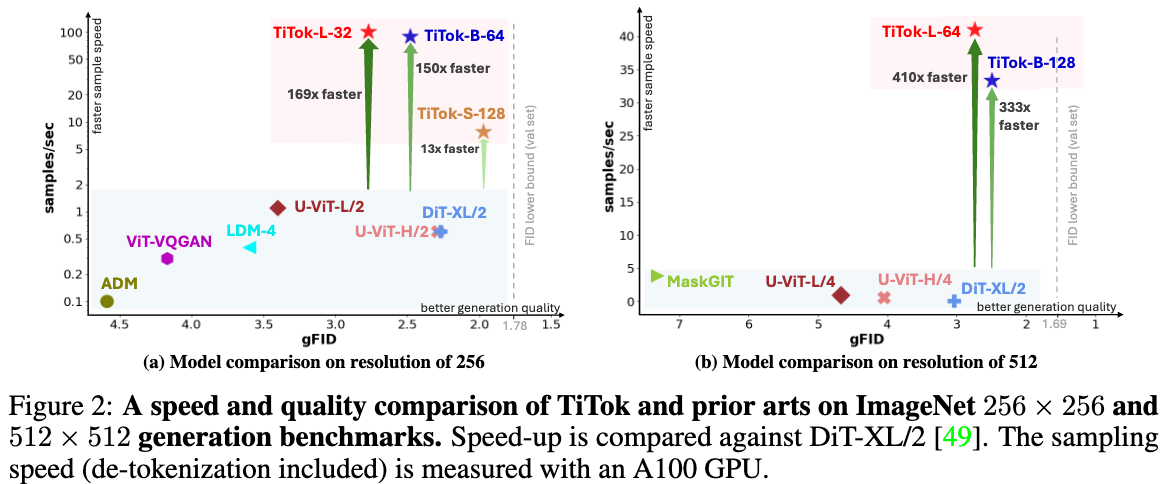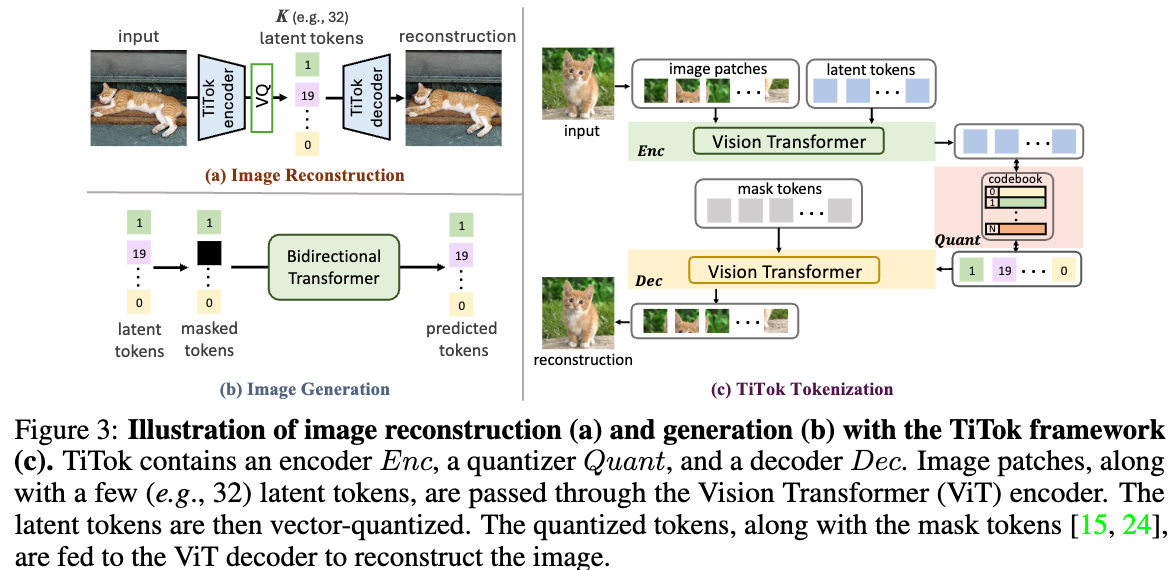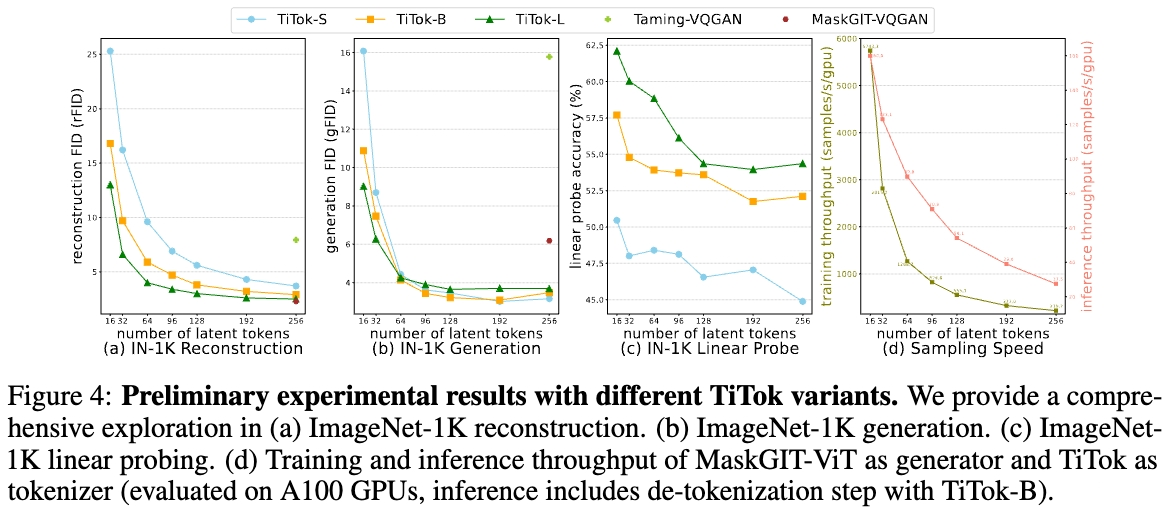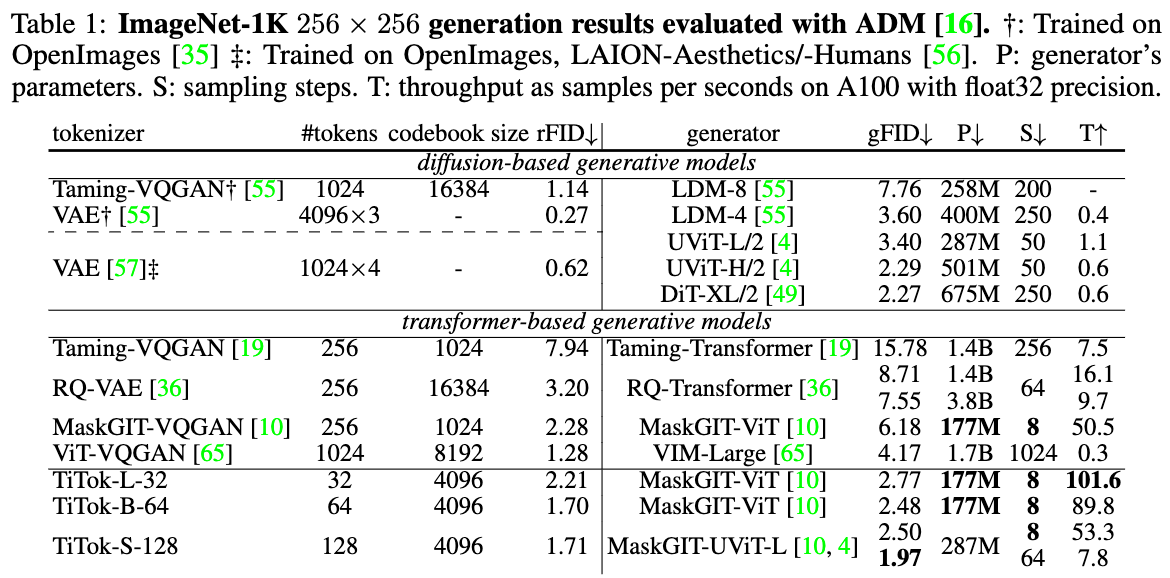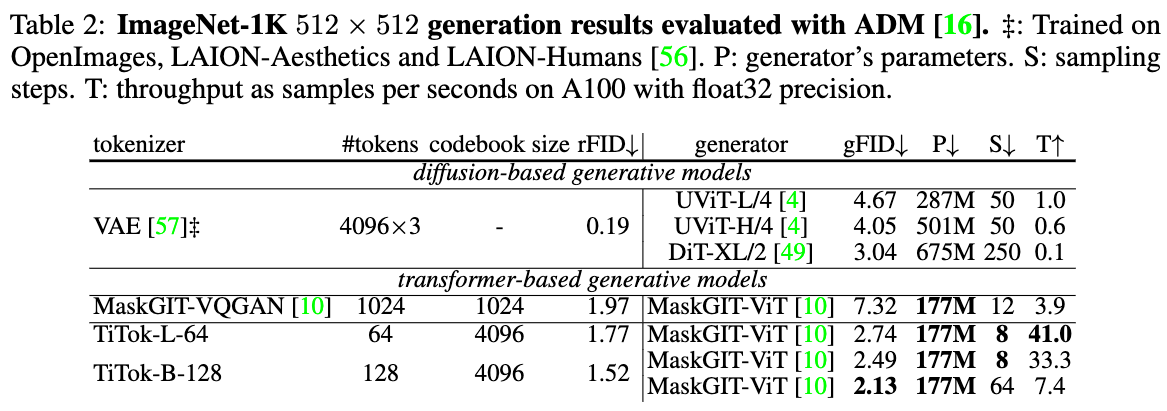Recent advancements in generative models have highlighted the crucial role of
image tokenization in the efficient synthesis of high-resolution images. Tokenization, which transforms images into latent representations, reduces computational
demands compared to directly processing pixels and enhances the effectiveness
and efficiency of the generation process. Prior methods, such as VQGAN, typically
utilize 2D latent grids with fixed downsampling factors. However, these 2D tokenizations face challenges in managing the inherent redundancies present in images,
where adjacent regions frequently display similarities. To overcome this issue,
we introduce Transformer-based 1-Dimensional Tokenizer (TiTok), an innovative
approach that tokenizes images into 1D latent sequences. TiTok provides a more
compact latent representation, yielding substantially more efficient and effective
representations than conventional techniques. For example, a 256 × 256 × 3 image
can be reduced to just 32 discrete tokens, a significant reduction from the 256 or
1024 tokens obtained by prior methods. Despite its compact nature, TiTok achieves
competitive performance to state-of-the-art approaches. Specifically, using the
same generator framework, TiTok attains 1.97 gFID, outperforming MaskGIT
baseline significantly by 4.21 at ImageNet 256 × 256 benchmark. The advantages
of TiTok become even more significant when it comes to higher resolution. At
ImageNet 512 × 512 benchmark, TiTok not only outperforms state-of-the-art diffusion model DiT-XL/2 (gFID 2.74 vs. 3.04), but also reduces the image tokens
by 64 × , leading to 410 × faster generation process. Our best-performing variant
can significantly surpasses DiT-XL/2 (gFID 2.13 vs. 3.04) while still generating
high-quality samples 74 × faster.
